Time for another Flashback Friday article. We created these types of articles in order to write about things we never got a chance to before, like our upcoming Game of the Decade article, or reviews of games that were released before GND-Tech was around. In this article we bring you a review of a hidden gem, Cryostasis: Sleep of Reason. It is a psychological horror game developed by Action Forms, published by 1C Company, Aspyr, and others, and released exclusively for PC in 2009. It was also a nominee for Dark Horse of the Decade in our aforementioned Game of the Decade article, it won Best Sound Effects of the Decade, and it has earned an entry in our ten best stories in video games article.
In our Flashback Friday reviews like this one, we score its graphics quality with regard to its time period in order to make it more fair. So keep this in mind! Continue to the next page for the review.
 Art by Hell Site.
Art by Hell Site.Once upon a time, Cryostasis: Sleep of Reason was actually well known. It was marketed heavily by NVIDIA for its use of NVIDIA’s PhysX engine (originally AGEIA PhysX before NVIDIA acquired and expanded upon it). It was also promoted heavily by EVGA, a company who provides NVIDIA graphics cards. Sadly, due to the demise of the studio that made the game, Cryostasis is no longer for sale anywhere. It used to be on Steam but was taken down for no good reason. Acquiring this game will be a challenge, but one worth the effort. I personally have this game on disc, having bought it at launch. If you don’t have the Steam version, make sure you install the PhysX patch found here.
Cryostasis is a psychological horror game set in the North Pole, with an interesting nomenclature. “Fate cannot be changed” is the motto for this game, until the ‘not’ in ‘cannot’ is dropped in the trailer above. The word ‘Cryostasis’ is not a reference to scientific cryo-preservation, but its meaning will become more clear as it is played. The word literally breaks down into ‘unchanging cold.’ “Sleep of Reason” is likely a reference to The Sleep of Reason Produces Monsters, an etching by Francisco Goya, a disturbing representation of society at the time. A perfectly fitting reference for this game.
You play as Alexander Nesterov, a Russian researcher sent to discover the remains of a lost nuclear ice breaker called the North Wind. It’s a shame that the official website for Cryostasis no longer exists, as it was very well designed and showed how much attention to detail went into designing the North Wind after a real life nuclear ice breaker. The website also had a collection if very interesting official trailers. Three can be seen in the video above.
The setting doesn’t seem unique for a horror game; a derelict ship stranded in the North Pole, so of course the player will be stranded inside to survive the cold. But the attention to detail and realism in the level design makes this setting very distinct. The game takes place almost entirely within the ship, with only a few opening moments and one brief sequence later in the game taking place just outside of it. This means that Cryostasis is linear, and it’s about as linear as a game can be. It’s linear in a way that makes sense though, not because of invisible walls or things like that. But it’s true that you can’t access many doors and deviate from the main path, so replay value isn’t a strength for this game.
Needless to say, the North Wind was left stranded due to foul play, and when Nesterov boards the ship he discovered that things were not as expected. You can see from the trailers that this is probably a weird game—playing it will confirm this notion.
Immediately when the player boards the North Wind, strange things happen. Dead bodies are found (with a glowing red heart, referencing “The Flaming Heart of Danko”), and the “Mental Echo” ability must be used on them in order to advance. So this was all set up as a sort of lesson on how the mechanic works. You go up to the body and interact with it, going back through time to the point at which they made their fatal mistake. You take control of this person and play in their shoes, and must correct their mistake.
These early dead bodies which you use Mental Echo on are actually the protagonist, so you’re interacting with your own dead body and ensuring you at least make it onto the North Wind alive. Like we said, this game is weird. It’s like Alexander Nesterov, the protagonist, exists out of time during the course of the game. This does tie in with the story as when using Mental Echo Nesterov travels back in time, so clearly he isn’t bound by time like a regular person is. This suggests that Nesterov may have been chosen. But chosen for what? Or perhaps you’re just dead and this is all your strange afterlife.

After using the Mental Echo ability on yourself several times, thus saving your own life, things continue to get weird within the North Wind. Time still seems to be unstable and something larger appears to be at work. After exploring the North Wind for just a short while, some of the game’s basic enemies appear—the ship’s crew members, but mutated in some way by the cold, so they’ve undergone a ‘cryostasis’ if you will. They seem to care for nothing other than destroying any type of heat source, including regular human beings. They are not only immune to the cold, but they seem to require it to survive. Some even swim around in the icy North Pole water.
Throughout the game the player must use this Mental Echo ability to advance. The other fatal mistakes you must correct are almost always related to a negative character trait of that person, usually selfishness. Through Mental Echo, the storytelling of Cryostasis is integrated into the gameplay. This relies heavily on character development, including brief character development; making a person seem human and showing us their traits and their flaws (which says a lot about that person) in a very brief amount of time (mere minutes) when we don’t know anything about the person’s background. We don’t even know their name. Yet Cryostasis is brutally effective in this brief character development—those negative traits that led to their demise (and usually the demise of others) seem to be all we need to know about them. Their actions have impact on the player, especially when you come across so many dead people whom you need to save with Mental Echo. It all builds up to suggest that something terrible happened on board the North Wind, and that something terrible exists within humanity, within people. What drove these people to act in such selfish ways? Fear? Panic?
While these characters appear as monsters in the present, their “crimes” seen when using the Mental Echo ability are not quite monstrous according to the definitions of most people. They are selfish, but within human nature. Acts of self-preservation with little to no regard for others. These characters were very human, but these acts were enough to damn them all.
Cryostasis does have unique characters though, it doesn’t just rely on these dead crew members who were all selfish or careless. But it is true that everyone but the protagonist is unnamed. The ship’s Captain and his Executive Officer are made out to be important characters early on. The Captain is a more spiritual, faithful character, while the XO is practical but perhaps too quick to act, and this causes them to disagree with each other almost all the time. Neither is clearly right or wrong, it can be easy to side with one of them at times but not at all times. Other important characters include the ship’s Officer of Engineering and the Cargo Officer, who doubles as a prison warden since the North Wind’s cargo includes prisoners, and also another officer whose cowardice never ceases to amaze. Despite the lack of names, Cryostasis: Sleep of Reason has some of the best character development of any game. So believable, so imperfect yet sympathetic, so human.
The mental echo isn’t the only method of storytelling. It has flashback scenes outside of mental echo, in which characters have dialogue with one another with the player as an observer.
We explain more about the plot and story of Cryostasis in our aforementioned article about the ten best stories in video games. So we’ll just quote ourselves here.
Cryostasis is a first person Ukrainian horror game. They’re really onto something over in the East when it comes to writing in general and writing for movies and games. Cryostasis deliberately parallels Maxim Gorky’s fairy tale The Flaming Heart of Danko, a tale that studies the relationship between a leader and his followers. This story is actually found in pieces throughout the game, really emphasizing the parallelism.
The game is set in the arctic as the name implies. You play as Alexander Nesterov, a researcher sent to locate a stranded nuclear ice breaker called the North Wind. It crashed into a glacier near the North Pole, and what became of the crew was unknown. While exploring the ship it is discovered that tragedy struck; many crew members were murdered and the player must find out why, and must discover the fate of the ship’s Captain. In addition, some sort of change has befallen the surviving crew members, turning them insane and violent, and making them fear heat and live off of the cold.
What is discovered is that the Captain followed in the footsteps of Danko, since like we said the stories are parallel. They explore very similar themes too, about leadership and how followers blame their leader during desperate times. Both are very humanistic stories. Cryostasis shows fundamental flaws in human nature and does so in a very powerful way. All of the horror you encounter is the result of nothing really extraordinary, just totally believable selfish acts done during a very trying time. It also shows us the difference that common decency and working together can make. It does such a good job at creating characters and portraying them as flawed but human; many commit terrible acts but it is very understandable why they do so, due to the desperate situations presented in the game. This is such a relief compared to one dimensional villains typically found in games, who commit evil just for the sake of evil.
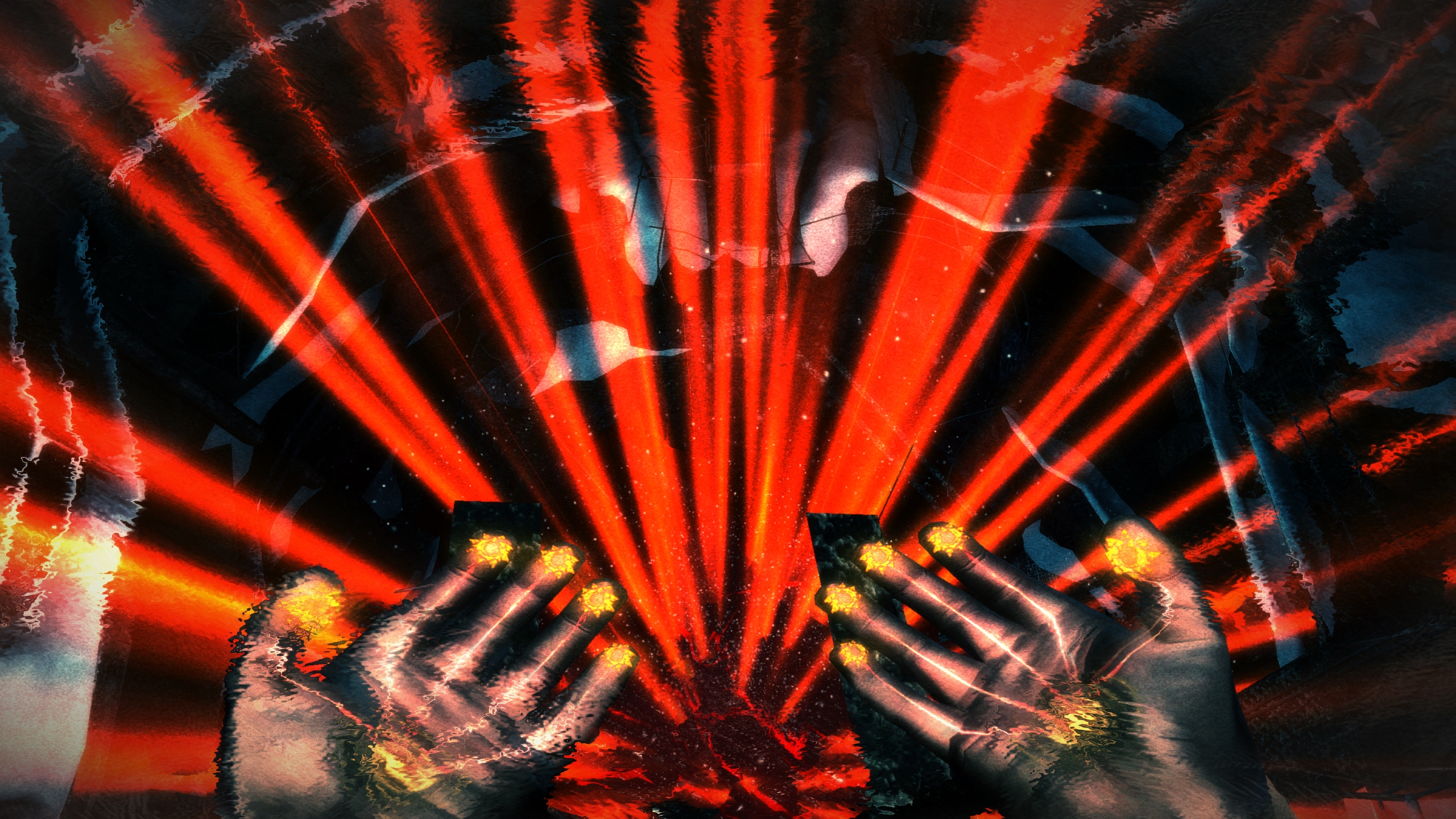
The start of the game quotes Hermann Hesse. They could not have picked a better quote here.
My story is comfortless. It isn’t sweet or happy as fictional stories are. It has shades of senselessness and confusion, of madness and dreams, like the lives of people who no longer delude themselves.
Other quotes appear throughout the game which give insight into what Cryostasis is about, but this one stands out the most. It so perfectly applies to the story that Cryostasis tells. It is indeed a comfortless tale, really exposing serious flaws about humanity in a brutally honest manner. Despite the added happy ending, it’s not a sweet or happy tale and this ending can easily be seen as a hoax. Confusion and madness are prevalent throughout, and Cryostasis is all about breaking illusions and introducing a hard dose of reality to the player.
The story is integrated into the gameplay surprisingly well, primarily through the game’s “Mental Echo” ability, in which the player comes across dead bodies in specific areas of the ship, set up in such a way that you can determine how they died based on the scene. By interacting with the bodies, the protagonist goes back in time to when that person died, and the player must correct their fatal flaw. This is primarily how you advance through the game. The fatal flaw is always an act of selfishness, cowardice, or treachery. Through this we are shown that common decency and working together are the only way to survive such a catastrophe (or even avert it altogether).
Like the Silent Hill games, the design of the game’s enemies are symbolic. Of course all of them physically show the “cryostasis” which they have undergone (the name Cryostasis may very well reflect the fact that humans in the game acted in a very cold manner), but many reflect on the theme of imprisonment. One enemy for example has a cage and prison cell integrated into his face, while another is seemingly crudely bolted together, and another has his hands bolted to his head and wears a metal mask with a keyhole on the front. Imprisonment… for their actions that damned them.
Powerful and touching, Cryostasis is a humanistic story but for the vast majority of its duration a rather negative (but truthful) one. We may not even fully understand the final boss, Chronos, we wonder if he was just added in to make for a happy ending so that players don’t kill themselves once they see the full picture of what transpired on the North Wind, and once they realize how terrible humanity is. Yeah… that’s very likely. Since it’s through him and through Nesterov that the chaos is undone. Chronos gave the North Wind’s crew members a second chance. This “boss battle” involves “playing a game” with Chronos, the God of time. Small waves of enemies are spawned, who attack Chronos by default. Chronos tries to Hulk smash them and gets a “point” for each one he does. You get a point for shooting some strange projectile at the enemies, and whoever has the most points by the end of it wins (if you lose, you fail and have to start over). The projectile resembles Earth revolving in its orbit. It’s a very strange ending that we don’t fully understand. Perhaps its related to the idea that violence isn’t the answer, as infighting, selfishness, cowardice, and betrayal is what damned the North Wind. It’s interesting that Chronos is blinded and bound by chains, almost suggesting he himself is bound by time in some way and couldn’t undo what happened aboard the North Wind. Hence him bringing in Nesterov, to do what he couldn’t? Who can say.

One thing we have to point out is that Cryostasis has three endings, but we feel the story would have been more effective if all three were combined into one ending. In each ending the player corrects a critical, selfish flaw committed by another character, the available characters being the executive officer of the ship, the officer in charge of the prisoners (which were the cargo of the ship), and the officer of engineering. Each aforementioned mistake is powerful and highlights those three characters. We don’t see any good reason to split up the ending into three, the player should have to correct all three of their mistakes, especially since most people wouldn’t replay the game.
So the North Wind tore itself apart after it crashed into the iceberg. How did it crash into an iceberg? This one dialogue is vital.
Executive Officer: Captain! A difficult stretch ahead, should we go around?
Captain: A difficult stretch? Heh! We’ll manage. We can’t afford to lose a whole day.
Executive Officer: We might lose a lot more if it’s as bad as it looks.
That’s just the start of the dialogue, but it conveys the general idea. The Captain underestimated the “difficult stretch” which included that large iceberg. He had too much faith in his crew. The Executive Officer tried his best to convince the Captain otherwise, but he wouldn’t have it. So the Captain isn’t a flawless, perfect character totally undeserving of doubt or perhaps even spite. We can see where all the characters are coming from, and it’s part of the reason why the story is so human, realistic, and powerful.

The XO used this opportunity to try and usurp the Captain’s throne, and succeeded. After the crash, fear and panic led to everyone blaming the Captain. Obviously the Captain does deserve some blame, but Cryostasis sets the bar high for human behavior. That is, setting it high compared to what’s most common. All three ending choices involve forgiving the Captain, which leads to the crew working together to stay afloat until rescue. This, opposed to blaming the Captain and then abandoning the crew in order to save yourselves, is a much better fate.
Now go back and read the quote from Hermann Hesse that starts off the game. That really cements what this game is about. Cryostasis presents a brutally honest view, like those who no longer delude themselves, demonstrating how terrible humanity is, and mere simple acts of decency were all that was needed to avert the disaster that struck the North Wind.
Cryostasis: Sleep of Reason exposes flaws in humanity, detailing how much stress can be put under a leader when things go wrong, showing us how people pin the blame on others, and then showing the consequences of these things. It also shows how far simple acts of decency can go. It benefits strongly from its character development, which is some of the best you will find in a game, and complexity is added via parallels and references to other stories as well as lots of visual symbolism. The themes aren’t unusual, but it tackles them in a very distinct way. The result is rather weird, but haunting and, as we said earlier, brutally effective.
The pace of Cryostasis is an ascent the entire way. As you progress, the ascension becomes a little bit faster so it is a gradual pace. It all builds up to reaching the Captain’s quarters and finding out his fate.
Gameplay
We already talked in-depth about the most significant gameplay mechanic, the Mental Echo. Cryostasis does not have complex gameplay, although it does have unique survival mechanics focused on cold survival. The protagonist’s health is essentially his internal body temperature; both things are combined into one value. It goes down when damaged or in the cold, but goes up when warming up against heat sources. The game also tracks ambient temperature within the game environments, which greatly influence your health/internal body temperature.
In addition to surviving the cold, the player must survive the enemies. Cryostasis has first person shooting mechanics that are surprisingly authentic and realistic with regard to weapon functionality. It also has melee combat via fist fighting, and it actually takes after the great Dark Messiah: Of Might and Magic to some degree. The player can throw punching combinations using the attack key (left mouse button by default) and the movement keys (WASD by default). Which movement keys you press determine what kind of punches you throw. Good stuff. See, even a game not focused entirely on combat can provide good combat. Too bad not many do.
Ammo is rather limited thankfully, so you’ll find yourself using melee weapons often. There are no difficulty options in this game. It’s not particularly challenging unless your frame rate dips in the more difficult encounters (which are some of the most hardware demanding, ironically enough). Nothing is complex about the gameplay or combat.
Unfortunately Cryostasis is not very scary; nowhere near as scary as Penumbra which came out 1-2 years earlier. Nor is it a particularly difficult survival horror game, it is certainly an “accessible” one and it would’ve been nice to have some more challenging encounters especially later in the game. So rather than relying on scares or difficult survival horror gameplay, Cryostasis relies far more on story where it does deliver.
But nothing demonstrates gameplay better than unedited footage! Take a look at some more.
As you can see, most of the tasks during Mental Echo segments are unique, which keeps it from being repetitive.
Audio & Visuals
For a 2009 game, Cryostasis had above average graphics quality. We believe every light source within the North Wind is dynamic, with dynamic shadows cast by almost anything that gets in front of the light. Frost and frozen objects have excellent texture quality by any standard, and the game makes good use of ambient occlusion. It is a DX10 game with DX9 backwards compatibility. It could do with more volumetric effects though, and the animations for hostile creatures are a bit herky jerky at times.
It even has very effective anti-aliasing. It uses MSAA and not even a whole lot, but it’s all that’s needed especially at 2560 x 1440. SSAA can be forced in DX9 mode but you lose out on some graphics fidelity so DX10 is recommended.
Water is a huge part of the game and it looks great. But visually the most impressive aspects are the physics effects. Cryostasis is known primarily for its demanding use of GPU accelerated NVIDIA PhysX, not for its excellent storytelling. This is sad, but the physics are indeed amazing even though they were toned down from the tech demo which can be downloaded here. We mentioned this already but we’ll say it again: be sure to grab the PhysX patch from there too before playing.
The PhysX effects when fully enabled were the cause of poor performance at launch. Nothing was capable of maintaining 60 FPS in Cryostasis back in 2009. I personally benchmarked this game many, many times over the years on many different hardware configurations. Of all games it showed the most improvement with a dedicated PhysX card. I tested a GTX 260 Core 216 combined with a 9600GT for PhysX, although the 9600GT only helped a little. A 9800GT helped a lot more in place of the 9600GT. The first setup to really smoothly max it out at 1920 x 1080 for me was a GTX 480 as the graphics card and a GTX 260 Core 216 has the PhysX processor. Of course, on modern high end hardware it’s not a problem at all.
Cryostasis is most demanding of CUDA cores (back then simply stream processing cores) and NVIDIA made gigantic leaps on that front with the GTX 680. My old GTX 480 + GTX 260 combo for example had a total of 696 CUDA cores. My current MSI GTX 980 GAMING 4G has 2048, clocked much faster too (capable of reaching up to 1567 MHz with boost) not to mention the superior architecture of current cards. So don’t worry about running this game anymore. But back then it was one of the hardest games to run.

Cryostasis had the best quality sound effects in gaming at the time it released. The quality of its sound recordings and masterings wasn’t matched until maybe Crysis 2 or Battlefield 4.
The variety of sound effects, the weight to every object collision, the reverb/echoes, the gun shots, everything is spot on. Note that while it has options for OpenAL and EAX, it actually does not use them. It’s a wonder why these options still exist in the menu, as Cryostasis actually uses FMOD.
As for soundtrack? It hardly has one. Any music you hear in game is coming from some kind of source within the game, like a record player. The rest is in the main menu and trailers. The silence is eerie and perfectly fitting for this game.
The characters speak with Russian accents and most of the voice acting is actually decent. Some of it is bad, but this is brief and not really significant or detrimental.
| 64-bit | No |
|---|---|
| Linux Support | No |
| Graphics API | DirectX 10 |
| Frame Rate | Unlocked |
| High Resolution Support | Yes |
| Ultrawide Support | Flawed (requires field of view change) |
| High Refresh Rate Support | Yes |
| Borderless Windowed Support | Requires third party tool (Borderless Gaming) |
| VR | No |
| Display HDR | No |
| Ray Tracing | No |
| Multicore CPU Support | 1-1.5 cores |
| Adjustable FOV | Multiple file edits required, see PCGamingWiki |
| Anisotropic Filtering | 16x |
| Anti-Aliasing | Multisampling |
| Upscaling | None |
| Sound API | FMOD |
| Sound | Up to 7 channels |
| Dolby Atmos | No |
| UI Scaling | Limited |
| “Analog” Keyboard Support | No |
| Debug Console | No |
| Modding | Limited, no tools |
Conclusion
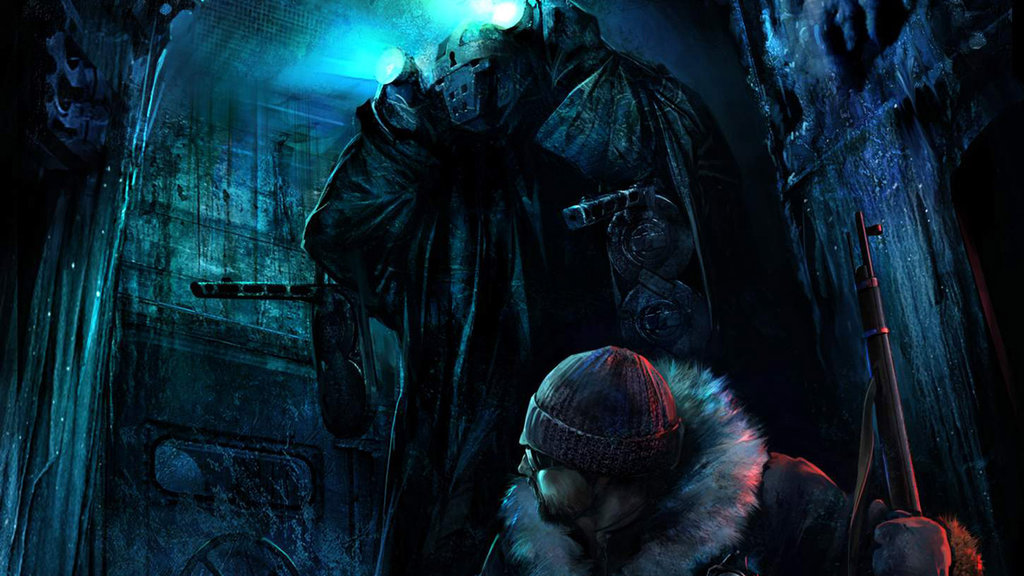 Art by Hell Site.
Art by Hell Site.Cryostasis: Sleep of Reason is one of the most underrated games of all time. It is excellence in storytelling as a video game, and it is technically superb in every way which may come as a surprise. Graphics fidelity, sound processing, and optimization are all superb and it has aged incredibly well. It is a shame that Action Forms, the developing studio, seems to be defunct, because they showed so much talent and effort in making this game.
Also, we can’t ignore the irony of the name “Flashback Friday” for an article about this game, in which much of the storytelling is done via interactive flashbacks!
Strengths
- Writing quality. It is a horror game that tells a dark, seemingly pessimistic but at the same time cautiously optimistic story with a powerful humanistic touch and filled with thoughtful literary references and parallels. Uses its “Mental Echo” gameplay mechanic brilliantly to help tell the story.
- Intelligent, varied enemy design that visually incorporates the themes being told by the story
- Level design is very authentic and detailed
- One of the best physics demonstrations in gaming, still true in 2020, and it really improves the immersion and gameplay
- Surprisingly excellent shooting mechanics, some of the best in the 2000s and they’ll withstand the test of time
- Top tier sound design
Weaknesses
- No built-in FOV adjustment, but the vast majority of game files are open for editing and PCGamingWiki contains instructions on how to change the FOV
- It could use some more challenging encounters throughout the game
- GPU PhysX is a double edged sword. AMD cards can’t run it, so those without NVIDIA graphics cards would have to use CPU PhysX and deal with single digit frame rates at times which is unplayable.
- The last, tanky enemy AI has trouble pathfinding occasionally
- Incomplete/removed OpenAL and EAX sound options left over in the options menu
- Not a fault of the game but modern PhysX drivers (even when running PhysX on the CPU) and/or Windows 10 render the game unplayable since a certain physics effect always crashes the game now
- Not a fault of the game itself but you can’t legally buy a new copy anywhere now


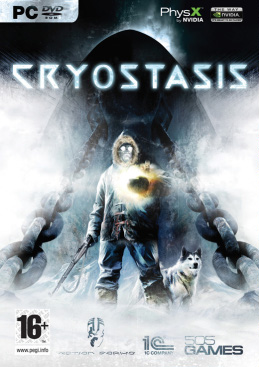


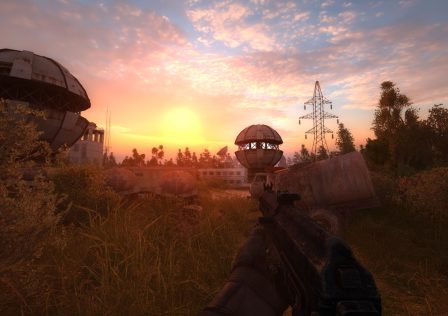
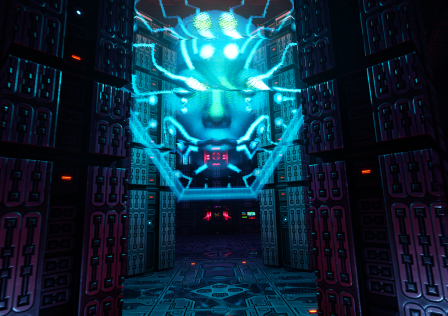
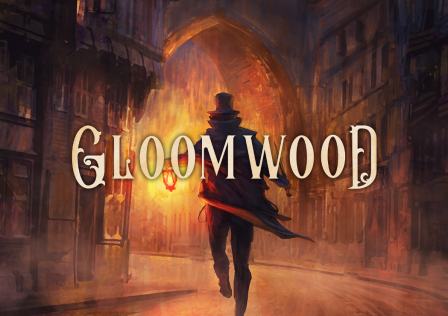
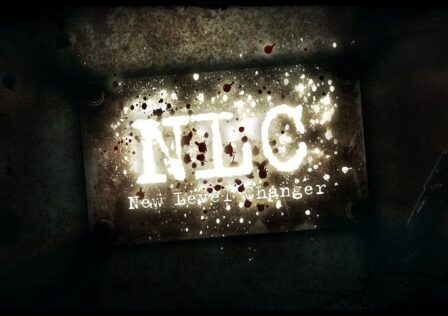
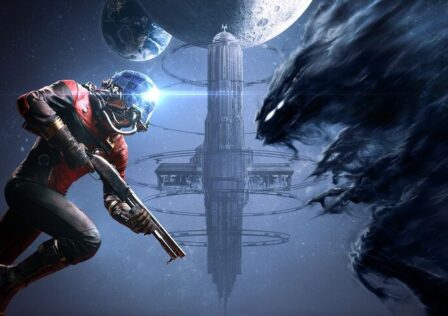
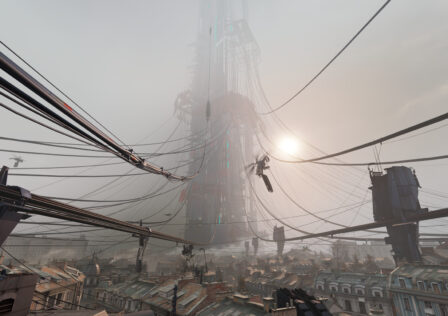
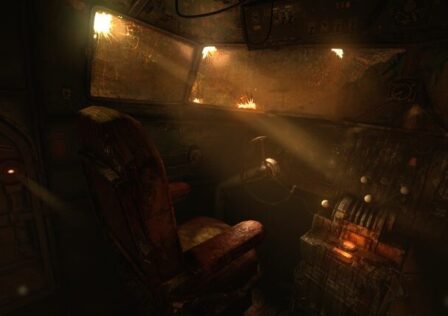


[…] as Half-Life 2 (2004), F.E.A.R. (2005), Dark Messiah: Of Might and Magic (2006), Crysis (2007), Cryostasis: Sleep of Reason (2009), Wolfenstein (2009), and believe it or not many others outclass most of today’s games […]
[…] award was extremely closely contested. BioShock (2007) takes home the gold. While Cryostasis: Sleep of Reason uses higher quality sound recordings/files for things like object collision, it is the advanced […]